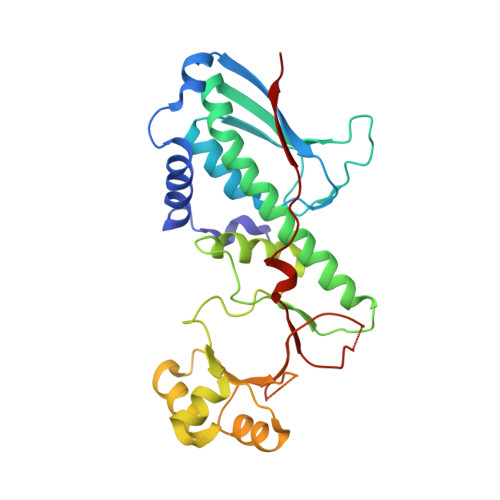Comprehensive X-ray Structural Studies of the Quinolinate Phosphoribosyl Transferase (BNA6) from Saccharomyces cerevisiae.
di Luccio, E., Wilson, D.K.(2008) Biochemistry 47: 4039-4050
- PubMed: 18321072
- DOI: https://doi.org/10.1021/bi7020475
- Primary Citation of Related Structures:
3C2E, 3C2F, 3C2O, 3C2R, 3C2V - PubMed Abstract:
Quinolinic acid phosphoribosyl transferase (QAPRTase, EC 2.4.2.19) is a 32 kDa enzyme encoded by the BNA6 gene in yeast and catalyzes the formation of nicotinate mononucleotide from quinolinate and 5-phosphoribosyl-1-pyrophosphate (PRPP). QAPRTase plays a key role in the tryptophan degradation pathway via kynurenine, leading to the de novo biosynthesis of NAD (+) and clearing the neurotoxin quinolinate. To improve our understanding of the specificity of the eukaryotic enzyme and the course of events associated with catalysis, we have determined the crystal structures of the apo and singly bound forms with the substrates quinolinate and PRPP. This reveals that the enzyme folds in a manner similar to that of various prokaryotic forms which are approximately 30% identical in sequence. In addition, the structure of the Michaelis complex is approximated by PRPP and the quinolinate analogue phthalate bound to the active site. These results allow insight into the kinetic mechanism of QAPRTase and provide an understanding of structural diversity in the active site of the Saccharomyces cerevisiae enzyme when compared to prokaryotic homologues.
Organizational Affiliation:
Section of Molecular and Cellular Biology, University of California, Davis, California 95616, USA.















